CHRISTMAS WITH INSECTS
The last five days the weather was constantly sunny and pretty warm for this time of the year. The temperatures are reaching thirteen to fifteen degrees Celsius and some insects are active on my lawn covered with various small herbaceous plants.
In this Christmas post, I'll show you what I photographed today and yesterday in my backyard. Have a good viewing.

This is the Toya propinqua, a planthopper from the Delphacidae family. You are looking at a brachypterous female in this shot.
Brachypterous is a term that describes an animal with rudimentary or abnormally small wings.

Toya propinqua was, and still is, the most numerous insect species these days on my lawn ...
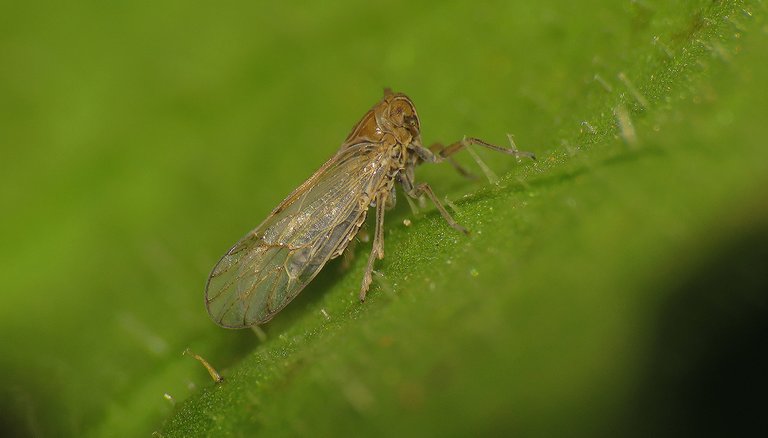
... but I found only one male with long, functional, fully developed wings.
That's why I photographed many females and what looked like brachypterous males if males can be brachypterous - I don't know much about this species becouse I found almost nothing about it on the Internet. So I strongly advise you to take with a grain of salt the stuff I'm writing in today's post.

This, for example, looks like a brachypterous male to me. But is it a male? Well, it surely is brachypterous, a quick look at its anatomy doesn't leave any doubts.

Is this a brachypterous female with wings shorter than you saw in females shown in previous photographs? Could be. I don't know. I have more questions than answers today when it comes to this species.
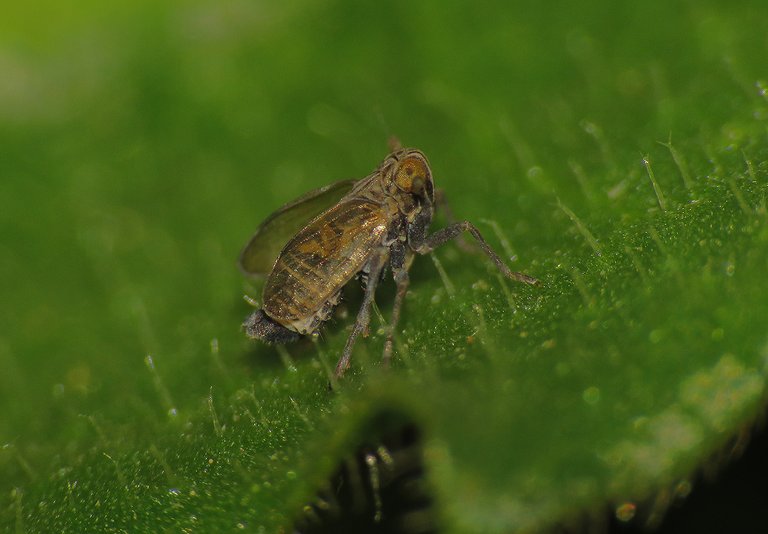
I have a few more Toya propinqua individuals to show you but I will return to them later, becouse right now ...
... I would like to shift the focus to the tangerine tree that grows near the house, in another sector of my yard.
There, among the beautiful, scented evergreen leaves, I found an insect that wouldn't be out of place among the usual stuff that make up Christmas iconography.
With its red coat with some black markings, this bug from the Lygaeidae family is dressed up for Christmas.
The name of the species is Spilostethus pandurus.
If you enlarge this photograph by clicking on it and take a good look at all of the details, you'll probably notice that the bug is using its proboscis to suck the juices from the base of the leaf.
This interesting fly with colorful eyes was sunbathing on one of the leaves near the top of the small tree.
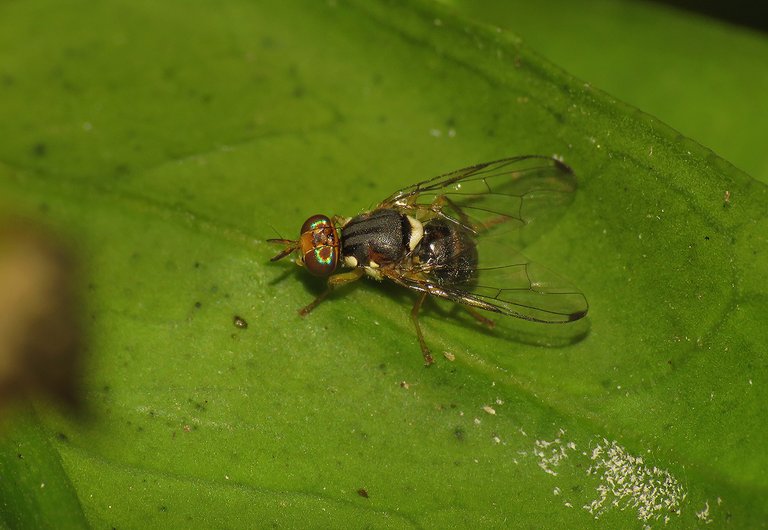
The name of the species is Bactrocera oleae. It belongs to the Tephritidae family.
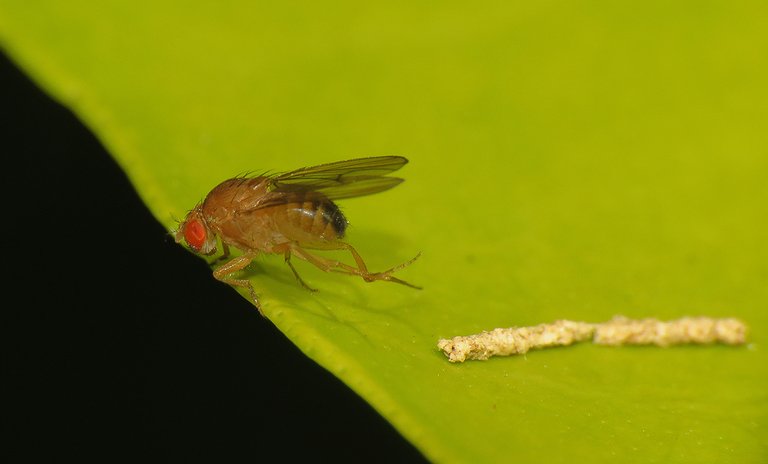
On the lower branches, I photographed a much smaller fly from the Drosophilidae family.
Drosophila melanogaster was cleaning its legs and wings when this and the previous photograph were taken.
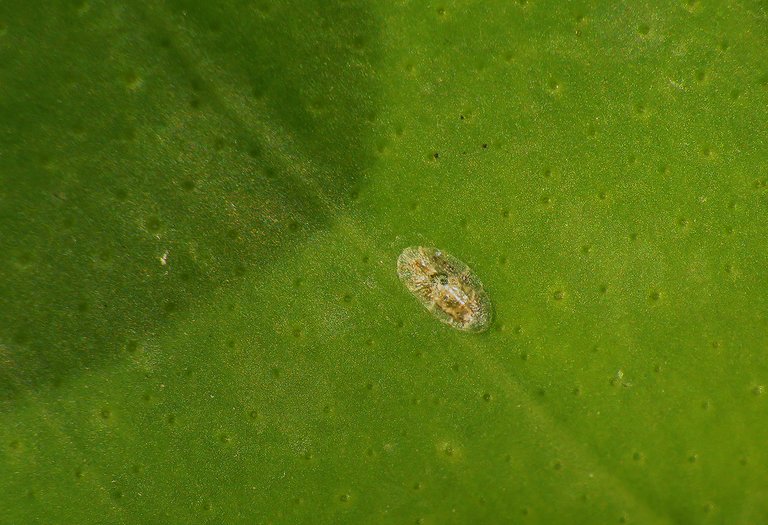
Here you can see the Coccus pseudomagnoliarum, a scale insect from the Coccidae family, and now ...
... is time to leave the tangerine tree ...

... and take a look at the silver bell near the top of the Christmas tree in the harbor that reminds us that this post isn't only about insects but about Christmas as well.
Fairly large patches of my lawn are covered with the Veronica persica plants.
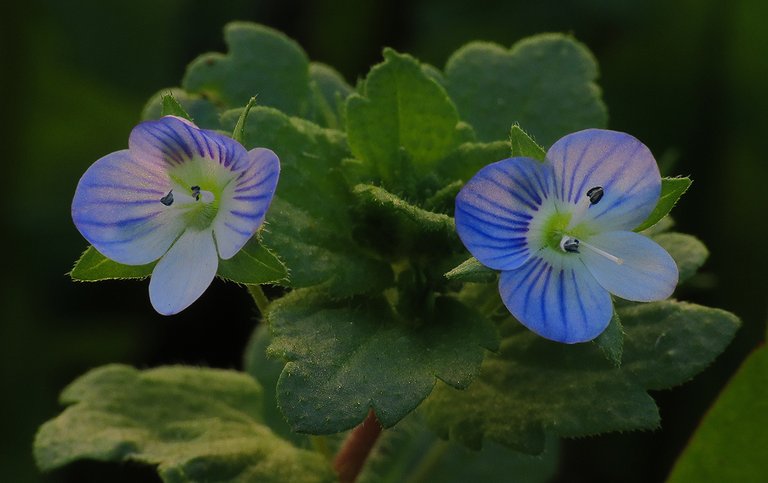
Their lovely small flowers are great subjects for macro at Christmas.
This tiny black bug was resting on the leaf of some plant that I wasn't able to identify.
The name of the species is Pachytomella parallela.
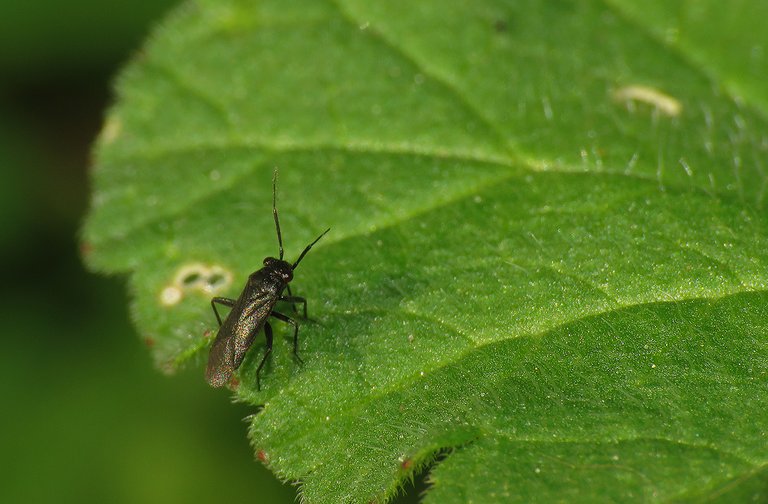
It belongs to the large and diverse Miridae family. If you compare this shot to the previous two, you will surely notice that I zoomed out a bit here. If I zoom out a bit more ...
... you'll be able to see another Pachytomella parallela posing on the same. Since the depth of field is pretty shallow the second bug is blurred. Blurred but still recognizable.
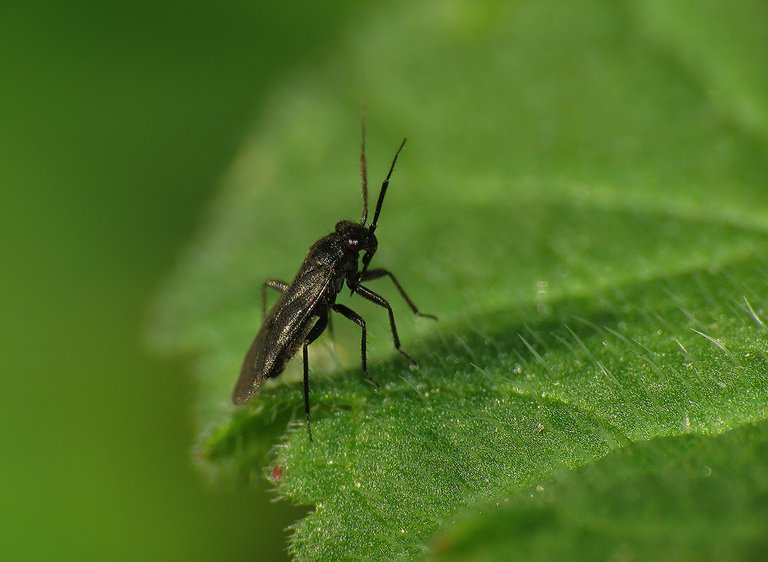
Here you can take a look at the bug from a different angle.

These insects are currently almost as numerous as the Toya propinqua planthoppers in my yard.

Here you can see another bug of the same kind posing on the top of an elongated leaf of some grass. All the Pachytomella parallela presented so far are adult insects.

I found only one nymph among the many adults. You can see it in this photograph.

Here you can see a Veronica persica flower photographed in the shade.
A flower of the same kind, presented in this shot, was well-lit by the winter sunlight when the photograph was taken.
And now, before continuing with other insects and plants ...
... I suggest we take a short break from the macro view, a break provided by this wide shot that shows a Christmas scene from the harbor of my hometown.
The common dandelion (Taraxacum officinale) is a plant that decorates the Christmas in my yard with its fluffy seeds and beautiful yellow flowers.
Here you can see another species from the Drosophilidae family posing on one of the many yellow petals.
In these two photographs, the same fly is cleaning its legs and mouth after feeding.
The name of the species is Scaptomyza pallida. Less than a meter from that dandelion ...
... I found the Lonchoptera bifurcata, a fly from the Lonchopteridae family.

This leafhopper was sunbathing on one of the neighboring leaves. Can't tell you what species is this becouse quite a few leafhoppers present in the area look more or less like this. The family is Cicadellidae, I'm at least sure about that.
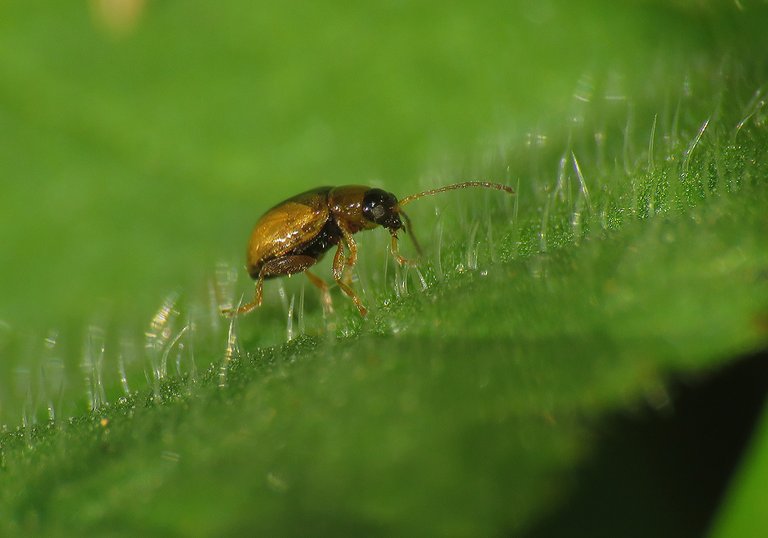
All the insects I presented so far were flies (order Diptera) or bugs (order Hemiptera). Here you can see a beetle, for a change.
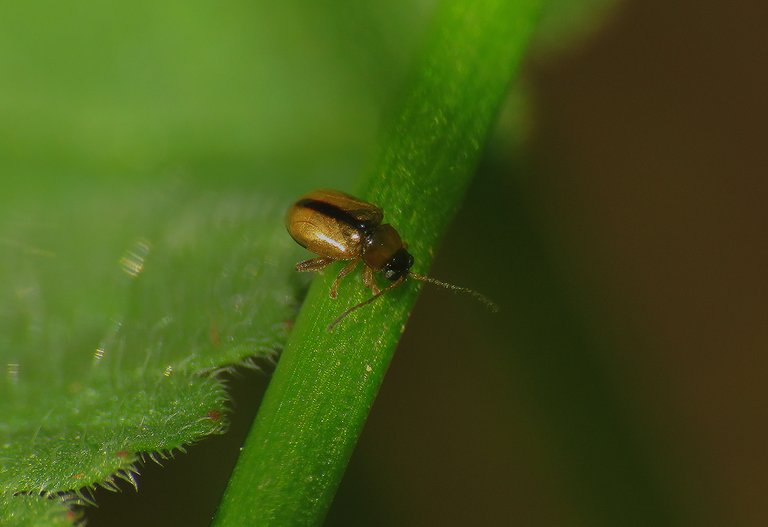
This is the Longitarsus ganglbaueri, a species from the Chrysomelidae family, the only insect from the order Coleoptera present in today's post about insects at Christmas.
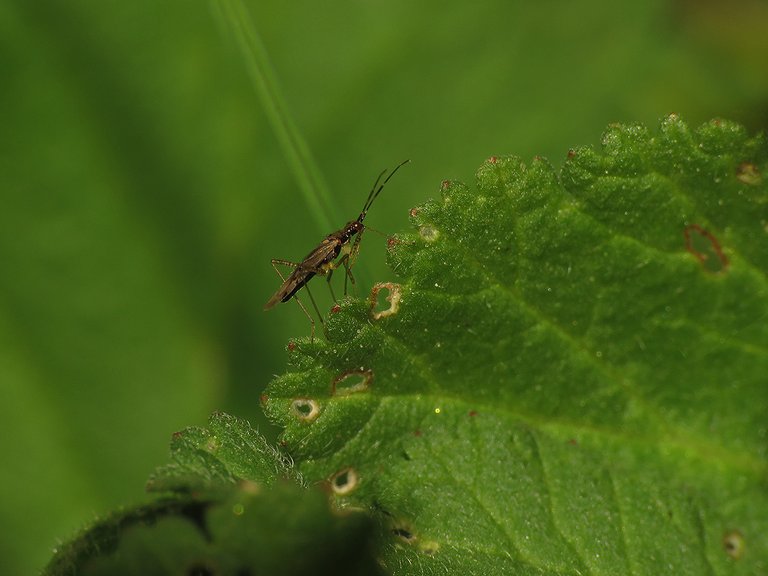
Here you can see a bug I encountered yesterday for the first time.
A quick look at its external anatomy was enough to determine that it belongs to the Miridae family ...
... but only today, a few minutes ago, I found out on the Internet that the name of the species is Dicyphus errans.
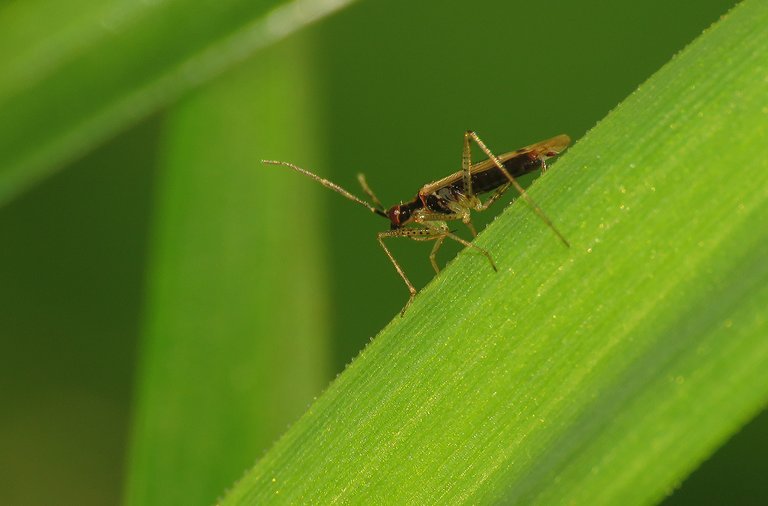
This bug is a fast and agile predator.

At some point, while I was photographing the Dicyphus errans on the blade of grass ...
... a tiny wasp, probably from the Braconidae family, entered the scene.
I love surprises of this type. In my book, a photograph with two insects is at least two times better than the same photograph with only one species.
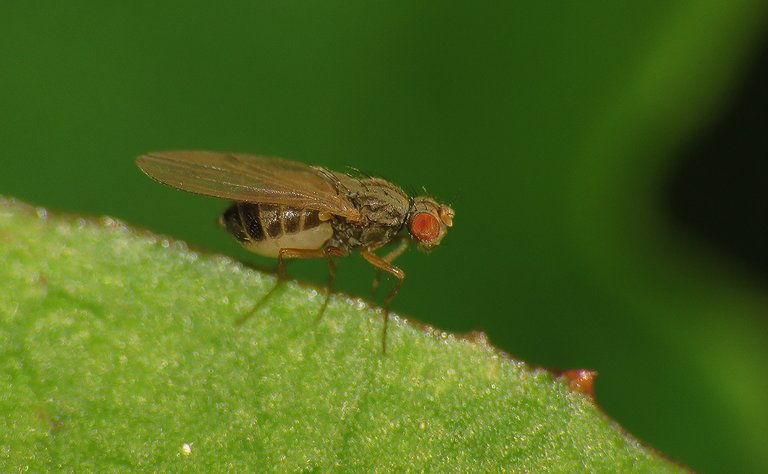
Here you can see another Scaptomyza pallida.
This species was introduced earlier in the post. If you compare the fly shown in this, the previous, and the following photograph ...

... to the fly of the same kind that was posing on a dandelion flower earlier in today's post, you may notice that the abdomen of this one is more swollen.
If you don't care about the difference I just mentioned, congratulations - you are a fairly normal, relatively sane person.
Not far from this Scaptomyza pallida ...
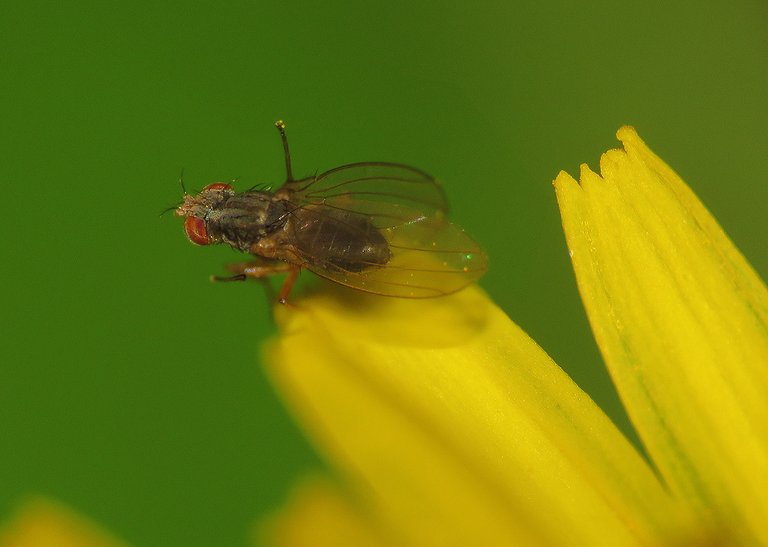
... another one was cleaning its legs ...

... on the edge of the very common, but surprisingly beautiful dandelion flower.
Meanwhile, down in the harbor ...
... three drunk polar bears were discussing the global warming.
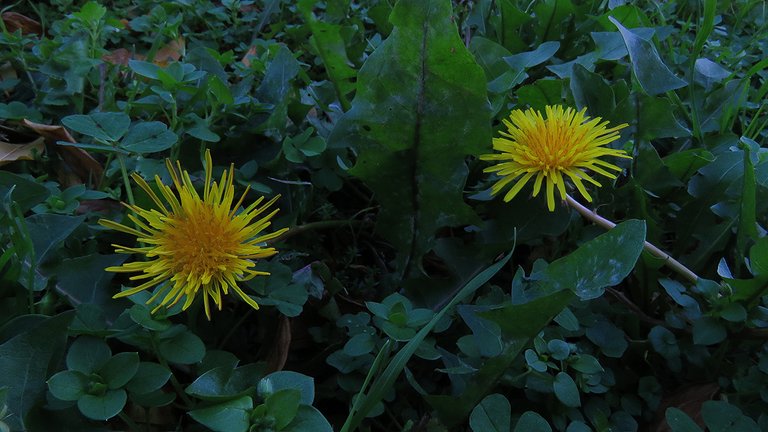
Thirteen minutes and thirteen seconds later, on the lawn behind my house in the neiberhood called Regi ...
... another, much bigger fly landed on the dandelion to get a bit of nectar produced by the flower. The fly shown in this set of eight photographs belongs to the Rhiniidae family. The name of the species is Stomorhina lunata.

Here you can see a Toya propinqua planthopper posing on the yellow petal of another dandelion flower. If you take a better look at this shot, you'll see another planthopper of the same kind blurred in the background. In the following photograph ...
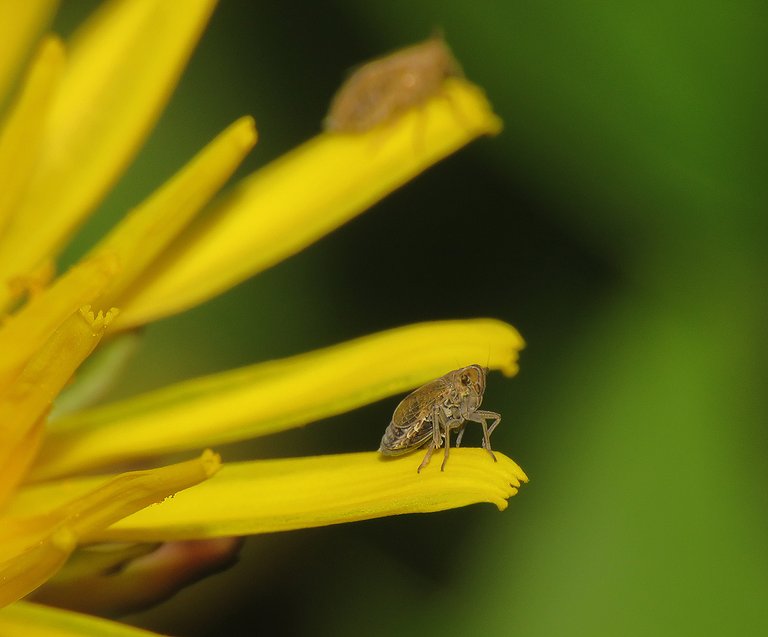
... the situation is very similar. The focus is on the planthoper in the lower part of the picture but there is also a blurred one near the upper edge of the shot. Only In this case, the blurred Toya propinqua is the same one you saw being in focus in the previous photograph.
Three planthoppers, lined up very neatly were resting on that dandelion flower. In this photograph, the focus is on the insect in the center but the other two planthoppers are almost as sharp.
I achieved that effect by taking three photographs, each with a different planthopper in, or almost in, focus, and then assembling them into one picture in Photoshop.
AND THAT'S IT. AS ALWAYS HERE ON HIVE, THE PHOTOGRAPHS ARE MY WORK.
The following links will take you to the sites with more information about some of the protagonists of this post. I found some stuff about them there.
https://www.inaturalist.org/taxa/914828-Toya-propinqua
https://insectvectors.science/vector/toya-propinqua
https://en.wikipedia.org/wiki/Spilostethus_pandurus
https://en.wikipedia.org/wiki/Olive_fruit_fly
https://en.wikipedia.org/wiki/Drosophila_melanogaster
https://en.wikipedia.org/wiki/Veronica_persica
https://www.inaturalist.org/taxa/624542-Pachytomella-parallela/browse_photos
https://en.wikipedia.org/wiki/Taraxacum_officinale
https://en.wikipedia.org/wiki/Scaptomyza_pallida
https://en.wikipedia.org/wiki/Lonchoptera_bifurcata
https://www.researchgate.net/figure/Figures-46-48-Body-images-in-dorsal-view-46-Longitarsus-ganglbaueri-Heikertinger-47_fig14_339001063
https://www.britishbugs.org.uk/heteroptera/Miridae/dicyphus_errans.html
https://en.wikipedia.org/wiki/Braconidae
https://en.wikipedia.org/wiki/Stomorhina_lunata
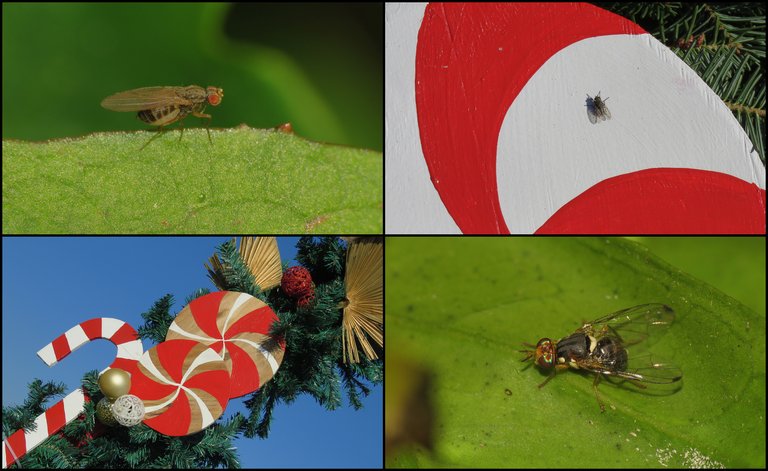
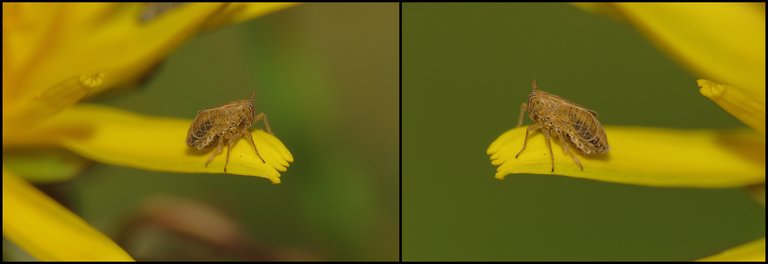
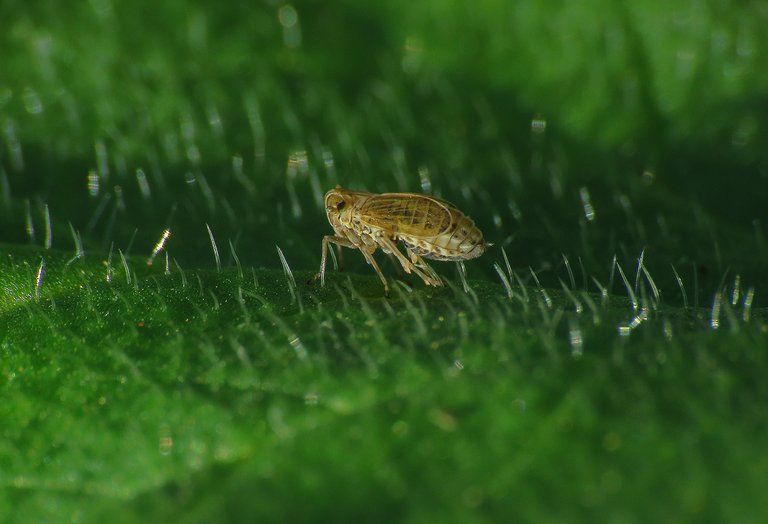
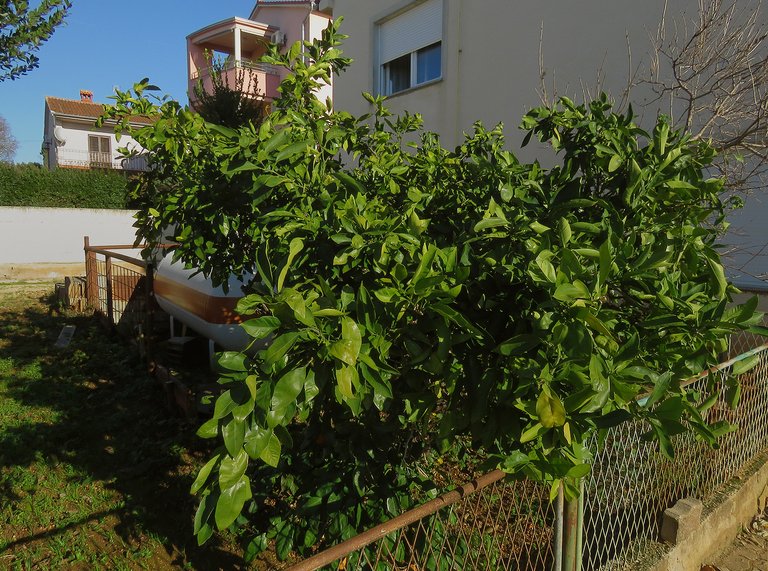
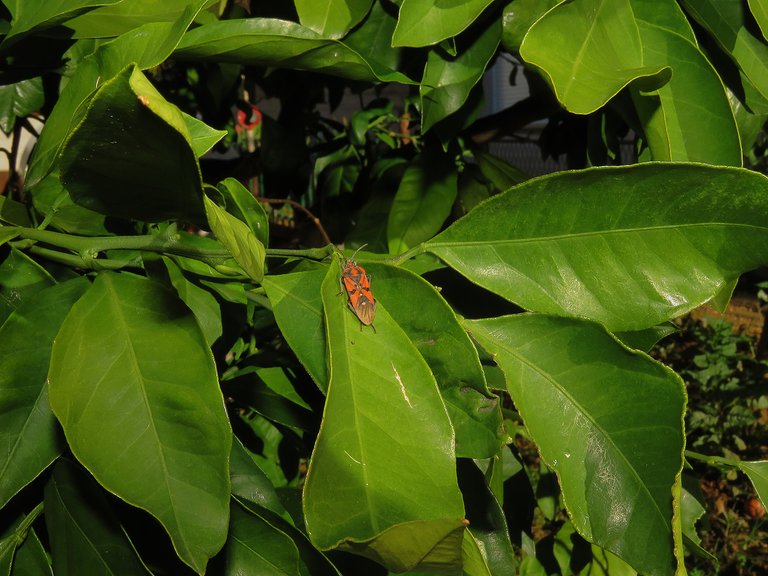



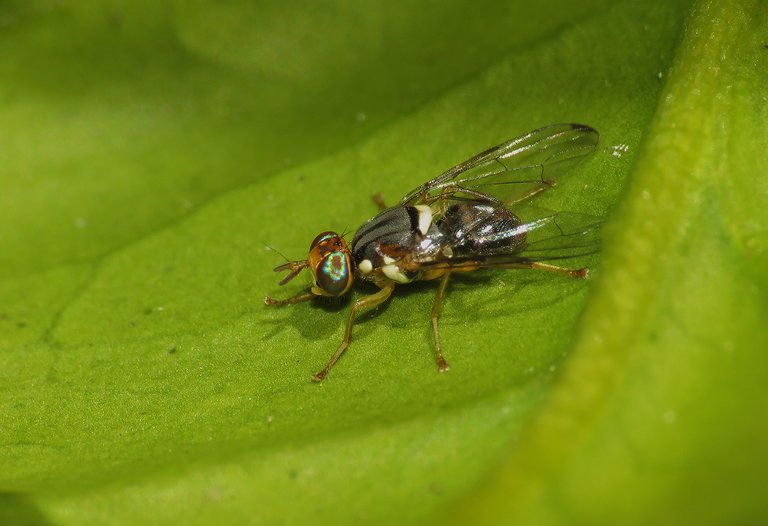


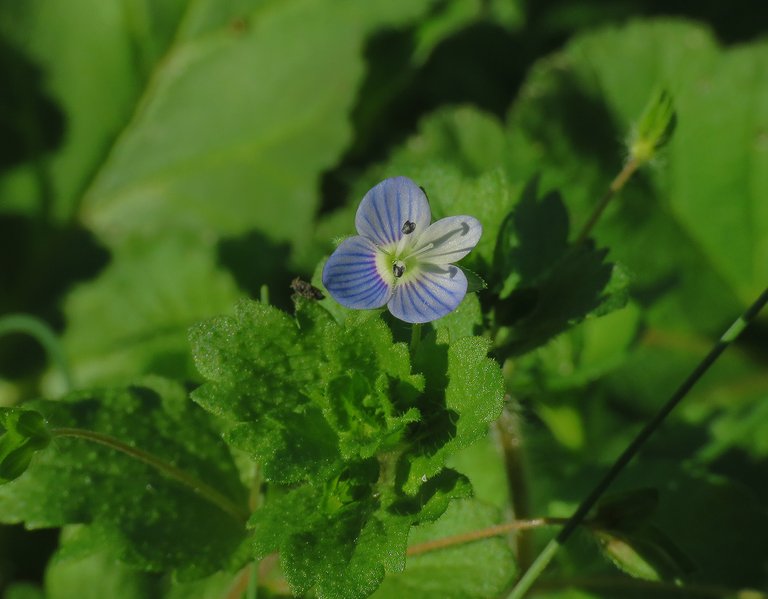
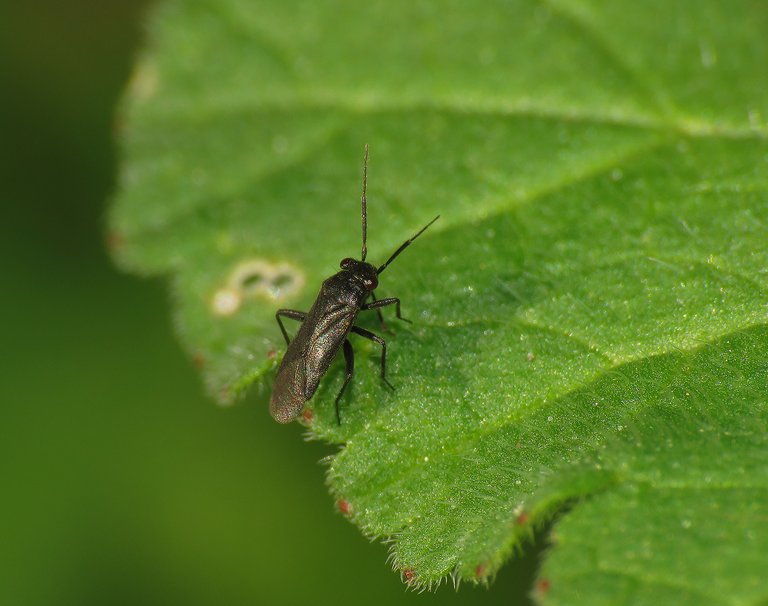
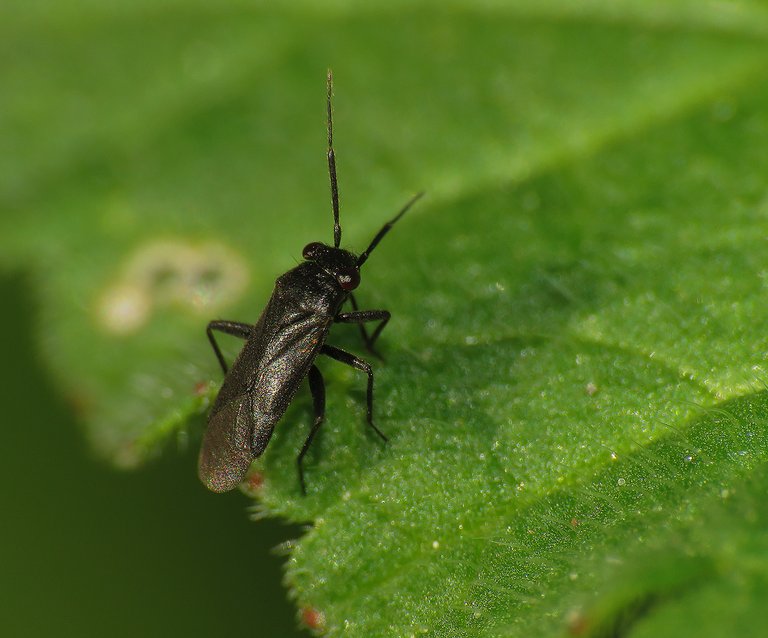
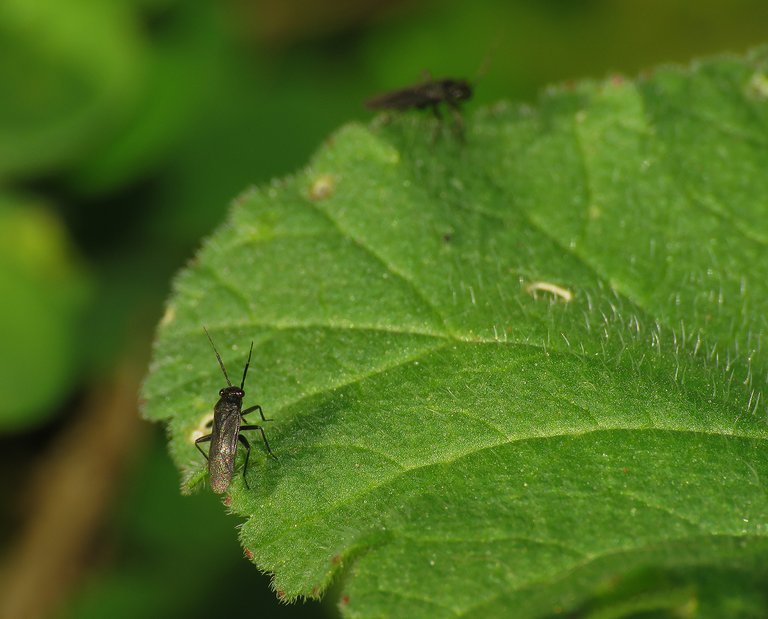
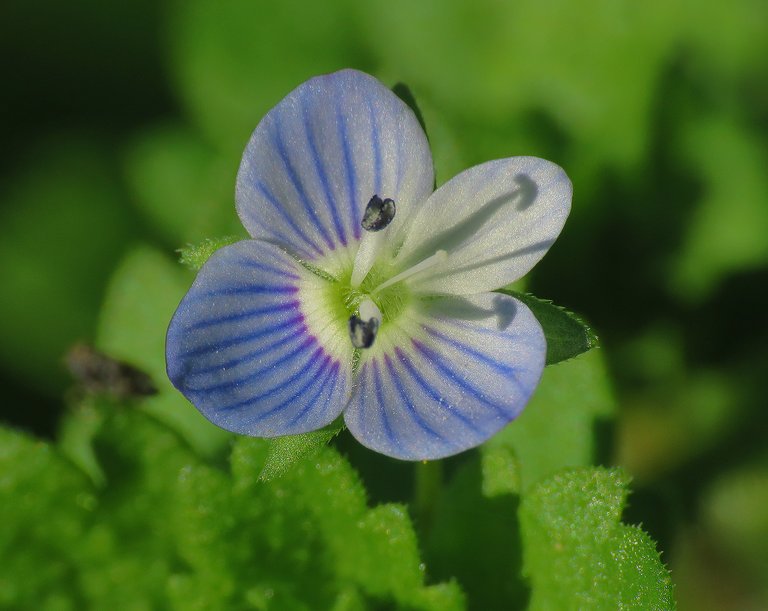
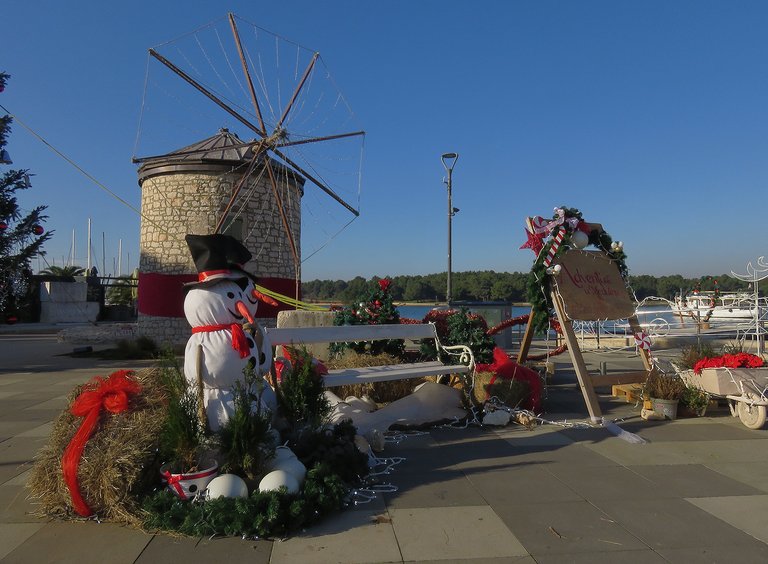


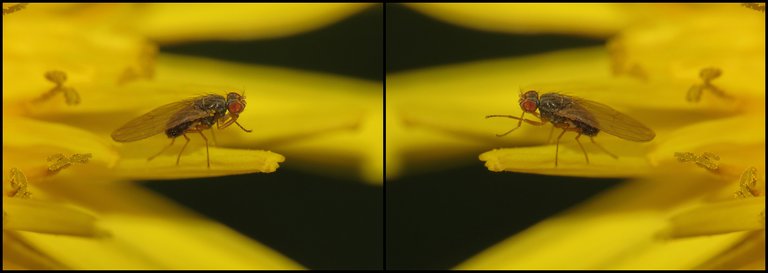
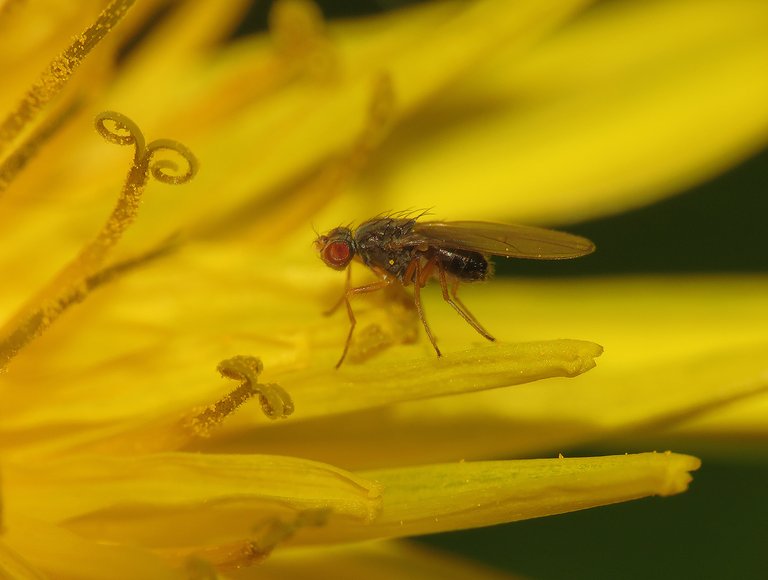


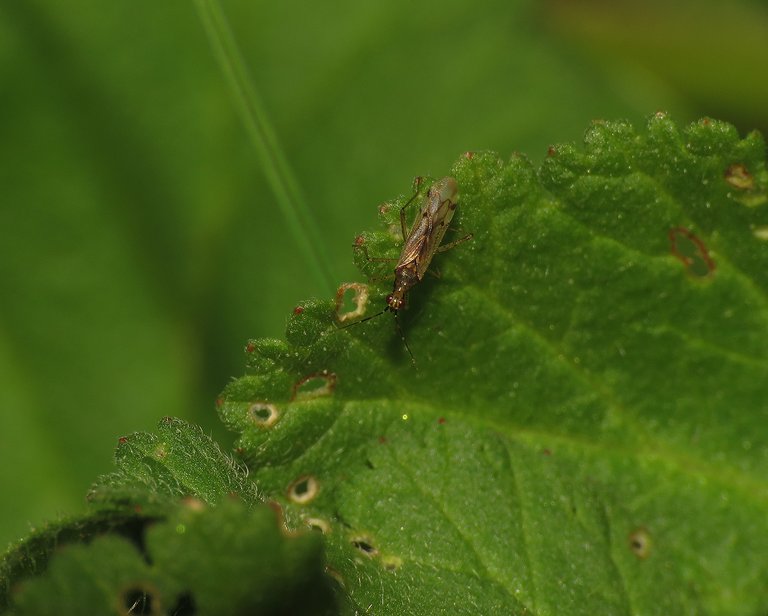

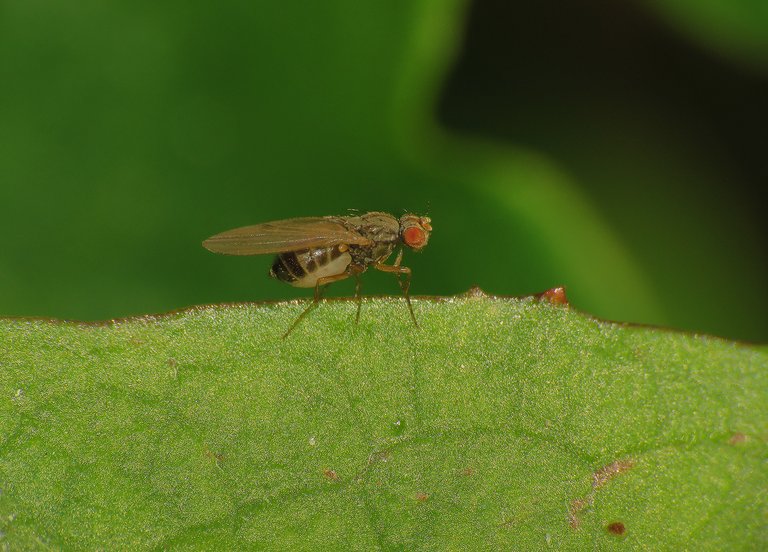
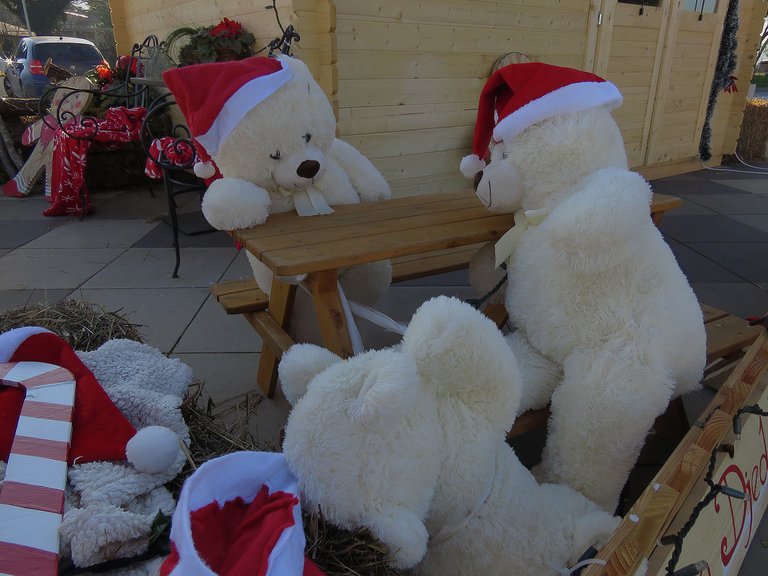
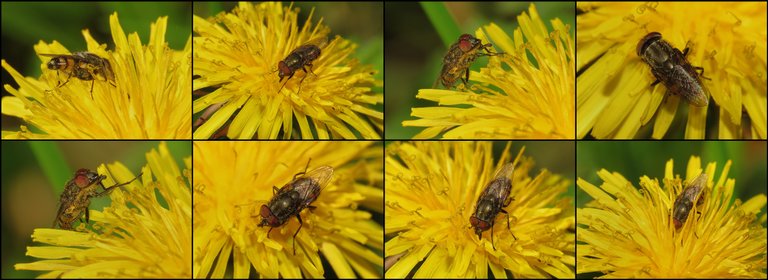

Merry Christmas and new year in advance 🎉 🍷 🎉 🍷 🎉🎉🎉. !AFIT
❄️🙂❄️🥂
Hey @borjan, you just received 10 AFIT tip from @caleb-marvel!
For more info about tipping AFIT tokens, check out this link
Veronica Persica plant looks very beautiful, it seems I have seen it sometime when I was on the field. But I sometime get baffled how you take pictures of these insects, and they do not run from you. Do you have a magic you perform that makes them stay to take some shots? Lol.
No magic is involved as far as I am aware.😀 I approach the insects slowly, quietly, and silently, and I am very persistent when stalking them. Sometimes I wait for long minutes in one place to get the opportunity to take a good photograph.
Wao, definitely,you are a pro at what you do, I give it to you... hope Christmas is going well over there??
Yes, I'm having some fun photographing these days.
It's nice, hope your festive period has been going on well
Yes, thank you, everything is going fine so far.
You are welcome, that's good.
Those are beautiful insect. Looks so amazing. Nice photography
❄️🙂❄️

I have seen most of such species at my home but have to say that not closely. I have seen their closer look in your post. There body texture, legs etc has shown in detail.
Yes, many of those insects are very small and one can't see them very well without some kind of magnifying lens.
Veronica plants little purple flowers are so attractive 😃
Merry Christmas to the insects😂😂😂
Anyway, the pictures are nice. Merry Christmas!
❄️😂❄️ Who knows what the insect Santa Claus looks like?
https://twitter.com/jewellery_all/status/1739349845968838716
I think it is one of the best ways to spend your holidays. you love photography and capturing gives you happiness, what else do you want? A holiday happiness. I'm i right or wrong?
Want to Know more about Hivepakistan?
Ping Us On Hive Pakistan Discord server
To support HivePakistan, delegate Hive Power to hivepakistan and earn 90% curation reward :)
Here are some handy links for delegation
A delegation of 500 or more HP makes you earn Hivepakistan supporter badge.
You are absolutely right. The freedom to do what I love is the best gift Santa Claus could give me.
Mis hermosos insectos, feliz navidad 🎇🎇 para todos los insectos del mundo y de Croacia..
❄️🙂❄️
Your Christmas gift never disappoint I must confess
Upvote recommended by @bhattg as part of Encouragement Program
Keep Up the good work on Hive ♦️
You have a sunny holiday. Enjoy your day. Those are nice photos thou.
It's amazing you're able to find a lot of insects.
have a good holidays.
❄️🙂❄️ Thanks. I whish the same to you - May your holidays be great!
All the pictures of very beautiful insects that you show me look quite good in photography.
On Sunday I went myself but I didn't find such beautiful flowers but I found many other flowers which I took pictures and put in my post. All these insects are more beautiful.
Congratulations, your post has been upvoted by @dsc-r2cornell, which is the curating account for @R2cornell's Discord Community.
Those cute small animals are looking so amazing. Good day to you.
Merry Christmas from this side dear friend 😍💝
Thank you. ❄️🙂❄️ Merry Christmas to you too.
https://twitter.com/lee19389/status/1739688489707585935
#hive #posh
Oh! how I missed seeing this kind of beautiful plants and insects and I bet you that this is the best way to spend your holiday aside from spending time with family.
The Veronica persica plants looks very lovely.
Dandelions in December! Here in New England for the last week the night temps are around 0C or just below (that's warm for this time of year) so no bugs around. Or dandelions...
You have a real winter there. 😃We are having a winter in name only so far. 🙂 I expect a few zero-degree days in January.